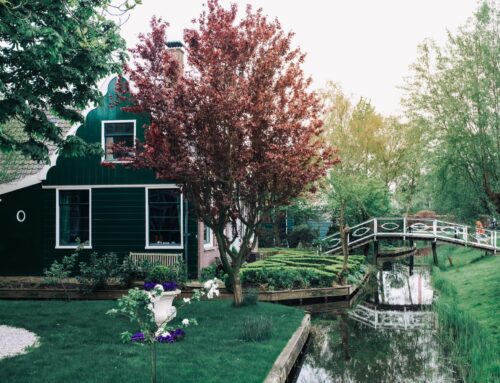Sustainable landscaping is an approach to designing and maintaining outdoor spaces that conserve resources, promote biodiversity, and reduce environmental impact. By implementing eco-friendly practices, homeowners can create beautiful and sustainable landscapes that benefit both the environment and their property. In this blog post, we will explore the principles of sustainable landscaping and how to create an eco-friendly outdoor space.
What is Sustainable Landscaping?
Sustainable landscaping involves designing and managing landscapes in a way that conserves resources, minimizes waste, and promotes environmental health. This includes using native plants, conserving water, reducing chemical use, and promoting biodiversity.
Principles of Sustainable Landscaping
- Use Native Plants: Native plants are well-adapted to the local climate and soil conditions, making them more resilient and requiring less water and maintenance. Using native plants promotes biodiversity and supports local wildlife.
- Conserve Water: Implement water-saving practices such as installing efficient irrigation systems, using drought-tolerant plants, and incorporating rainwater harvesting. Mulching and soil improvement can also help retain moisture and reduce the need for irrigation.
- Reduce Chemical Use: Minimize the use of synthetic fertilizers, pesticides, and herbicides. Instead, use organic and natural alternatives, such as compost, mulch, and beneficial insects. This promotes soil health and reduces pollution.
- Promote Biodiversity: Create diverse plantings that provide habitat and food for wildlife. Include a variety of plants with different bloom times, colors, and textures to attract pollinators, birds, and beneficial insects.
- Recycle and Reuse Materials: Use recycled and locally-sourced materials for hardscaping and garden structures. Compost yard waste and kitchen scraps to create nutrient-rich soil amendments.
- Minimize Lawn Areas: Reduce the size of traditional lawns and replace them with native grasses, groundcovers, or other low-maintenance plants. Lawns require significant water, fertilizer, and maintenance, so minimizing their size can reduce resource use.
Steps to Create a Sustainable Landscape
- Assess Your Site: Evaluate the conditions of your property, including soil type, sun exposure, and drainage. Identify existing plants and features that can be preserved or enhanced.
- Plan Your Landscape: Create a landscape design that incorporates sustainable practices. Consider the principles of sustainable landscaping and how they can be applied to your site. Plan for efficient irrigation, appropriate plant selection, and the use of recycled materials.
- Select Plants: Choose native and drought-tolerant plants that are suited to your climate and soil conditions. Group plants with similar water and maintenance needs together.
- Install Efficient Irrigation: Design and install an irrigation system that conserves water. Use drip irrigation, soaker hoses, or rainwater harvesting systems to provide water directly to plant roots.
- Improve Soil Health: Enhance soil quality by adding organic matter, such as compost and mulch. Healthy soil retains moisture, reduces erosion, and supports plant growth.
- Implement Sustainable Practices: Use organic fertilizers, reduce chemical use, and compost yard waste. Create habitats for wildlife by planting diverse species and providing water sources.
Benefits of Sustainable Landscaping
- Resource Conservation: Sustainable landscaping conserves water, reduces chemical use, and minimizes waste. This helps protect natural resources and reduce environmental impact.
- Cost Savings: By using native plants, efficient irrigation systems, and organic practices, homeowners can reduce water and maintenance costs.
- Improved Soil and Plant Health: Sustainable practices promote healthy soil and plant growth. This results in more resilient landscapes that require less intervention and maintenance.
- Support for Wildlife: Sustainable landscapes provide habitat and food for pollinators, birds, and beneficial insects. This promotes biodiversity and enhances the ecosystem.
- Aesthetic and Functional Benefits: Sustainable landscapes can be beautiful and functional, providing attractive outdoor spaces that support a variety of uses.
Conclusion
Sustainable landscaping is an environmentally-friendly approach to designing and maintaining outdoor spaces. By using native plants, conserving water, reducing chemical use, and promoting biodiversity, homeowners can create beautiful and sustainable landscapes that benefit both the environment and their property. Implementing sustainable landscaping practices can conserve resources, reduce costs, and support local wildlife. Invest in sustainable landscaping to create an eco-friendly outdoor space that enhances your quality of life and the health of the environment.





